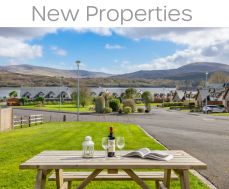Self Catering Accommodation Guide to Kells, Co. Meath, Ireland
About Kells
While in Kells you could shop in the many shops or sample one or more of the 18 pubs! Horse riders can visit Bachelors Lodge Equestrian Centre, which can be found by taking N3 to Dublin from Kells. Look for signed gateway in wall on the left. Fishing, golfing, hiking, walking and swimming are also available.
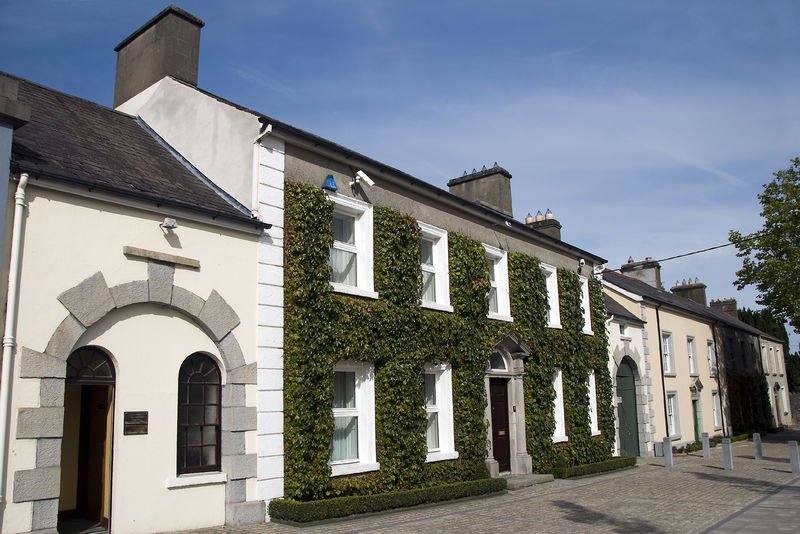
Things to do near Kells
Killykeen Forest Park, Cavan
This beautiful park is woven around the lake and islands of Lough Oughter. A number of marked trails range in length from 1.5km to 2.8km, each offering enchanted views and a diversity of habitat for the wild fauna. Norway and Sitka spruce are the main tree species with a considerable amount of mixed woodland, including ash, oak, birch, sycamore, beech and alder. Stoat, badger, fox, grey squirrel, hedgehog and rabbit are among the variety of fauna, which can be spotted here. The tree mixture and wide expanses of water attract a great variety of bird life. Herons, coot, moorhen, cormorant and great crested grebe, mallard and tufted duck are here as are the wagtail, kingfisher, warblers and reed bunting. The park contains sites of great historical interest including an Iron Age ring fort and Clogh Oughter Castle, which can be seen from the Derinish Trail. The castle stands on an island and is a 13th century de Lacy Castle which, was later claimed by the O'Reily chieftains of the area. When the site was excavated in 1987 human remains were found from the last Cromwellian siege of 1653.
Bird Watching near Kells - Cuilagh Mountains, Co. Cavan
The blanket bog plateau is a rich depository of acid loving plants such as butterworth, sundews and bladderworth as well as a wide variety of heathers and grasses. You can see out some myrtle and a variety of delicate orchids. The peregrine falcon can be found on the plateau while other species which find an ideal habitat in Cavan include the blackbird, merlin, red grouse, golden plover, stonechat, whinchat, wheatear, skylark, swan and dipper. Nesting snipe, great crested grebe, curlew and redshank occupy the shores of Upper Lough Erne and up to 5% of the world's whooper swan population winter here. Undisturbed marshland, which covers much of the lake shores of Cavan attracts birds such as snipe, curlew, lapwing, redshank and water rail. A colourful hunter along the reed beds is the hen harrier. The old oak wood near Teemore on the Shannon Erne Waterway harbours sparrowhawk and Kestrel while Inishfendra Island near Crom Castle on Upper Lough Erne contains Ireland's largest heronry. The water soldier offers a graceful display when it rises to the surface of the water to flower in July. Rival displays are provided by the arrowhead, frogbit and flowering rush. Woodlands harbour jay, woodcock and pheasant as well as migrant warblers while the colourful silver washed fritillary, peacock and red admiral butterflies, give flamboyant displays.
Belturbet Festival of the Erne - Anthony Vesey , Co. Cavan
Ten day international family and angling festival incorporating the Huzzar Lady of the Lake Contest; outdoor stage with music and entertainment nightly; free entry to pub quiz, team talent, sporting and dancing competition, River Erne tours and row boat racing.
Walking near Kells - The Cavan Way, Co. Cavan
The Cavan Way provides a pleasant hill and valley walking connection between the Leitrim Way at Dowra, a small village community near the source of the River Shannon and the Ulster Way at Blacklion village. Following generally the course of the young river to its source at the mystical Shannon 'Pot', the walk follows quiet valley and riverside landscapes to the more unenclosed uplands of the spring line of the river's source. The walker will enjoy the upland section between the 'Pot' and Blacklion, which includes the forested Burren area and its cemetery of ancient tombs, stone megaliths and monuments. Fine views are obtained from these elevated upland areas. Route Details: Dowra, Shannon Pot, Blacklion. Total Distance: 26km/16 miles. Longest Stage: Dowra to Blacklion - 26km/16 miles. Highest Point: Giant's Grave - 260m/850ft.
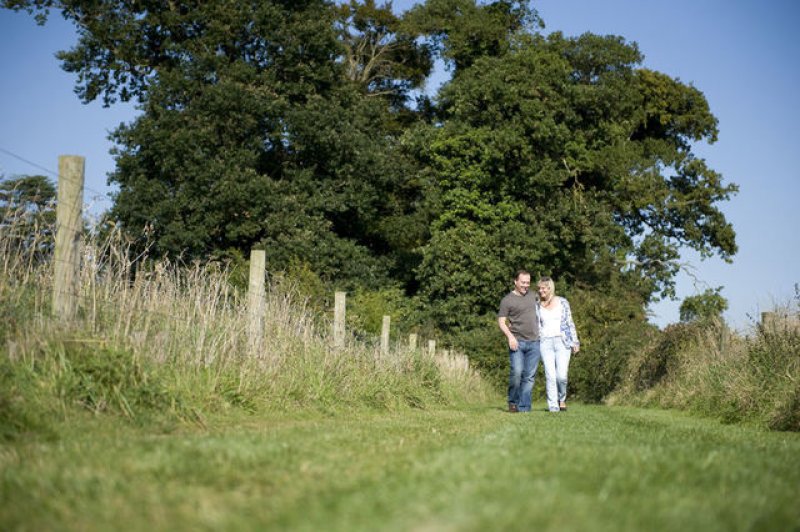
County Cavan - County of Lakes and the Source of the Shannon
Cavan's meandering rivers, streams and tree-lined lakes provide the visitor with excellent opportunities for fishing, cruising and swimming. The county is said to have 365 lakes - one for each day of the year. The Shannon-Erne Waterway links the two rivers, which spring from the barren Cuilcagh Mountains in Cavan's north-west. The mystical source of the Shannon, known as the 'Shannon Pot', is just a few miles north of Dowra, on the Cavan Way Coarse angling remains one of Cavan's most popular attractions, but there is also game fishing for brown trout in Lough Sheelin to the south. Cavan is an ideal area for a quiet break or a family holiday.
Visitor Attractions near Kells
Tara Hill
Tara Hill is a place where Irish myth, legend and history are surviving even to this day. This magical site has been home to gods and goddesses, to druids and warriors and to Ireland's High Kings.
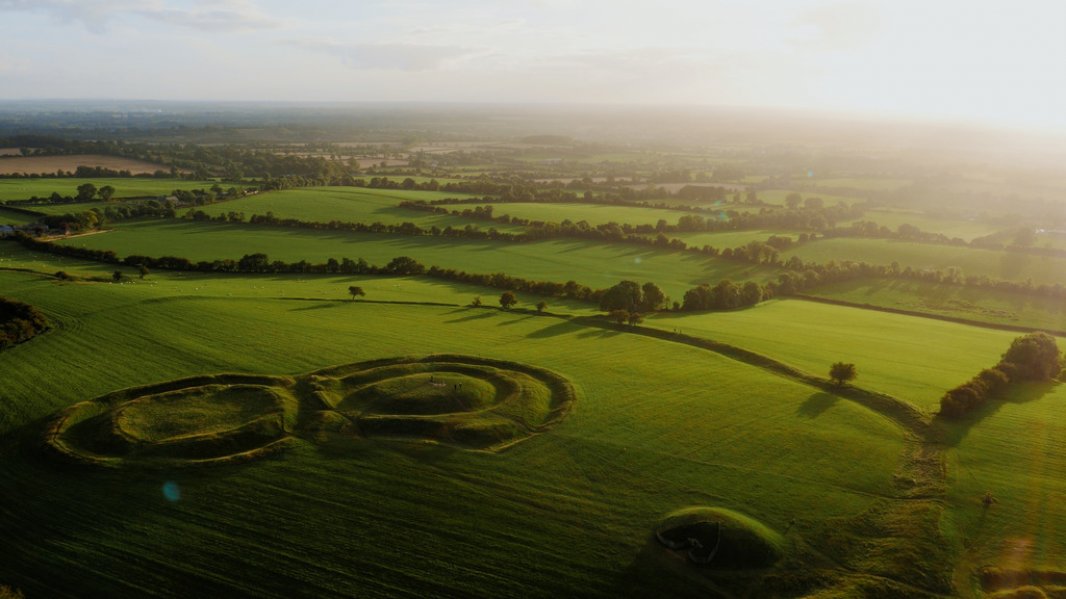
Newgrange, Knowth and Dowth
The spectacular passage grave at Newgrange is the jewel in the crown of Bru na Boinne. Around the outside of the mound stood a circle of standing stones, of which 12 now survive. The stones of the passage and of its entrance curbstone were ornamented with spiral and other designs characteristic of megalithic art in the Atlantic region of prehistoric Europe. The tomb was in use throughout the late Neolithic Period of the 3rd millennium BC.
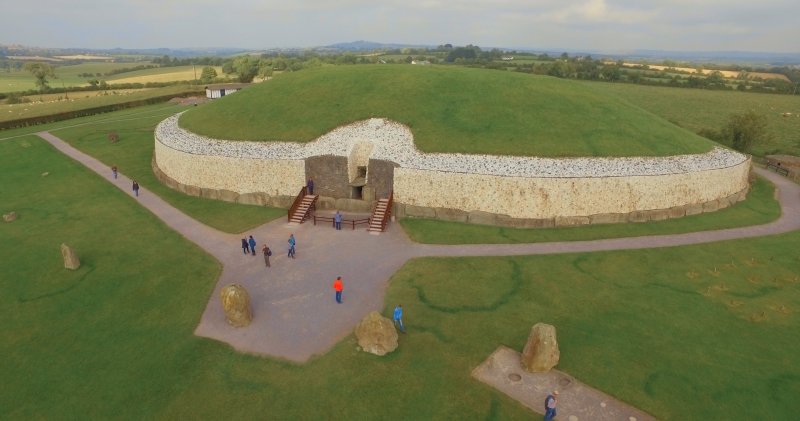
Kells
Kells, an officially designated Irish Heritage Town, is one of the finest examples of a monastic settlement to be found, boasting a High Cross and St. Columcille's House. Kells Heritage Centre is a new vibrant visitor attraction located in the Heritage Town of Kells, housed in the beautifully restored Courthouse are a multi-media exhibition, a gift shop and Kells Tourist Information Centre.
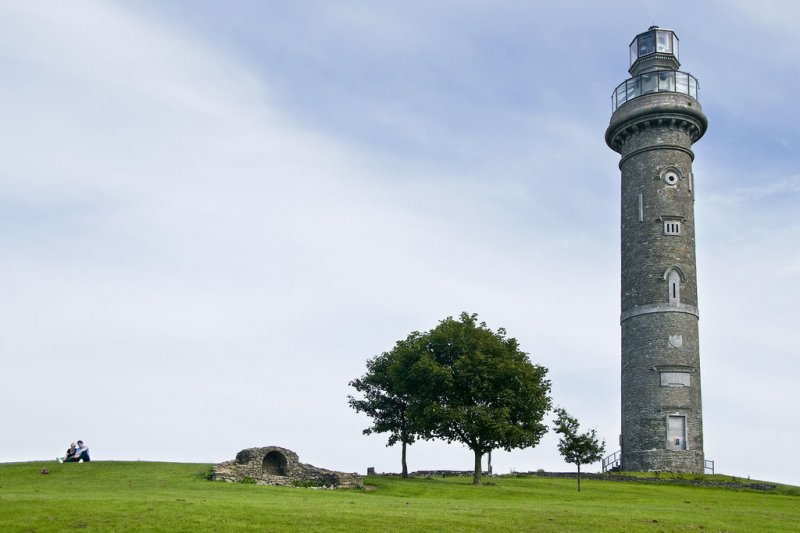
Trim Castle
Trim Castle is the largest remaining Anglo Norman Castle in Europe. It acted as a powerful symbol of Norman strength, making it an even more challanging target for Irish attack. It was reopened to the public, completely renovated in July 2000. The film Braveheart, with actor Mel Gibson was filmed at Trim Castle.
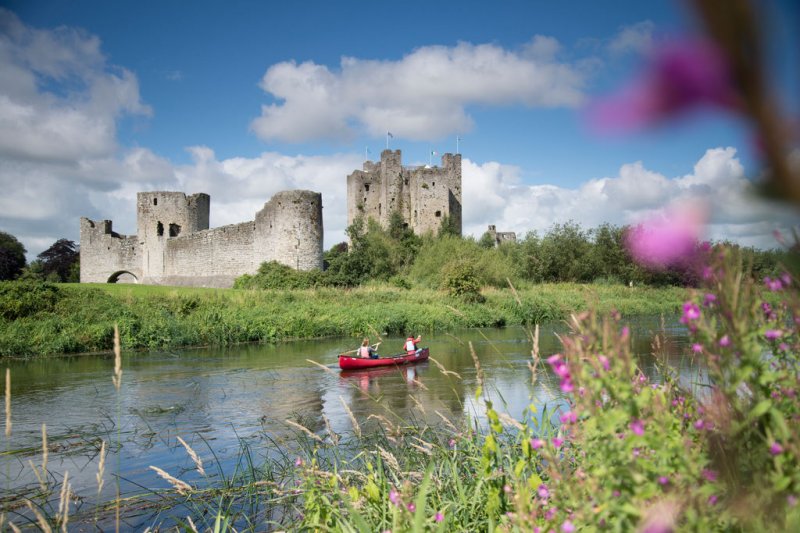
Slane
St. Patrick lit his paschal fire on the hill of Slane, kindling the flame of Irish Christianity. In more recent times fires have been lit for different reasons, during August when Lord Henry Mountcharles, proprietor of Slane Castle hosts his annual concert attracting international performers and celebrities.
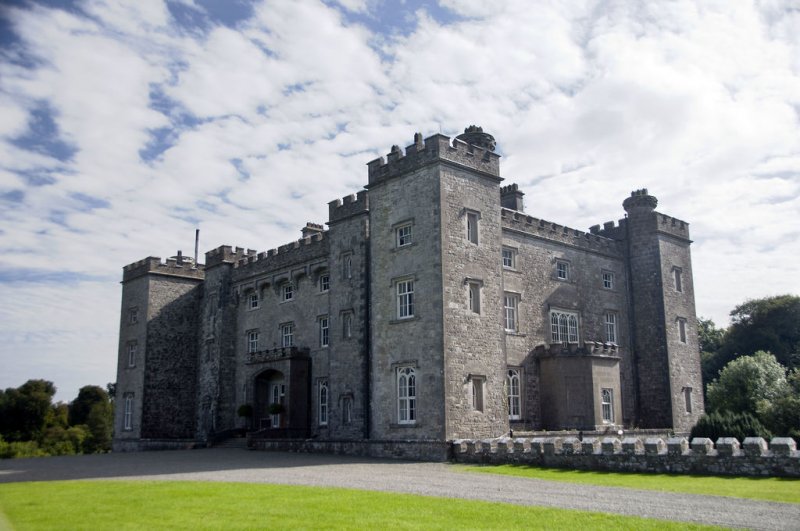
Megalithic Tombs (MT) & (LT)
Found at Loughcrew, Co Meath. 10 miles from Kells. Take the Oldcastle road. Watch for signposts to the tombs. Be prepared to walk up the hill. It is well worth the view. Or go to the Loyd Memorial Park Tower just outside town. Take the Oldcastle road and look for the sign "People's Park".
St Kierans Well (KW)
This is one of the most beautiful Holy Wells in Ireland. Take the Oldcastle Road. Turn right at the road signed "Carnaross". Take the next right. Look for it on your left. Continue to return to Kells.
Grove Gardens (GG)
A Bird sanctuary and mini zoo set in the midst of delightful gardens. The exhibition, entitled The Splendour of Ireland gives an insight into the crafts and culture of monastic Ireland and entices the visitor to explore the various sites of interest throughout Kells. Take the Athboy road. The gardens are well signposted.
History of Kells
Meath
Meath is known as 'The Royal County' because it contained the seat of the High Kings of Ireland on Tara Hill. Proof of human habitation has been discovered in Co. Meath which dates back 9,000 years. Artisans and craftsmen built spectacularly mysterious grand passage tombs at Newgrange, Knowth, Dowth. The High Cross of Kells and the striking calligraphy of the Book of Kells represent the most readily recognisable decorative artifacts of Celtic Christianity.
History of Headfort House
About a mile from the town of Kells is Headfort, the noble mansion of the Marquess of Headfort, beautifully situated in a well-planted demesne of more than 1200 statute acres, intersected by the river Blackwater, which within the grounds expands into a fine lake. Building commenced in 1757 taking fourteen years to complete, to the design of George Semple. The exterior is quite dominating, despite the influence of family friend, Lord Burlington who had completed 'The Grand Tour' and was impressed by the work of Andrea Palladio of Treviso.
The interior was designed by Robert Adam of Edinburgh and contains 100 breathtaking rooms. The Main Hall, Staircase and the Eating Parlour are the outstanding features and here Palladianism succeeded in taking effect. In more recent times Percy French was a contributor to the House's décor. The house is surrounded by various breathtaking gardens and parklands, which add in no small way to the attractiveness of the estate. The estate has gone through something of a transformation over the past few years and is now an prestigious international boarding school.
Kells
In 559 AD St. Colmcille established a monastery in Kells and in Derry and Durrow. The Saint then went into exile to the island of Iona, off the coast of Scotland. In 807 the monks at Iona abandoned the island and fled to Kells, bringing with them their most sacred manuscript known today as the Book of Kells, after 68 of the order were murdered by Viking raiders. The town of Kells is probably best known for The Book of Kells which was completed in the 9th century and remained there until 1541 to finally be moved to Trinity College in Dublin in 1661. The town of Kells continued to prosper until the 12th century when having sustained several attacks by local as well as Norse raiding parties, Kells could take no more. After the arrival of the Anglo-Norman invaders in the 12th century, activity at the monastery ceased. In the years following the invasion, a castle was built and Kells became a walled town. Throughout the following centuries it sustained multiple attacks, either by the natives or by the invading English until the town was completely pillaged and destroyed in the 17th century.
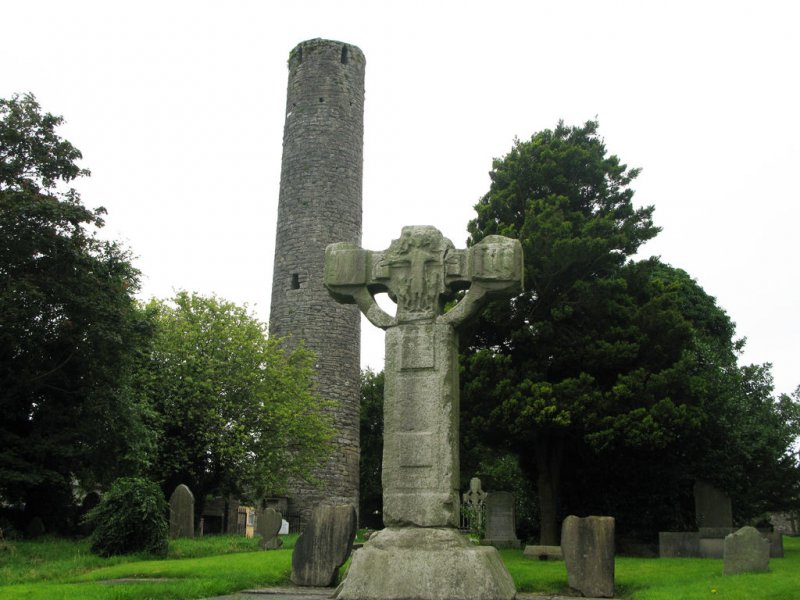
Since the 17th century, Kells has managed to spring back and regain its status as a bustling and thriving town, but unfortunately, there are no remains of the castle to be seen. However a small portion of the wall remains at the back of Cannon Street, as does the 100 foot round tower, Columbia's Stone House and sculptured crosses dating to the 9th and 10th centuries.



